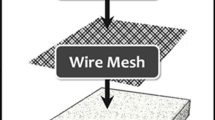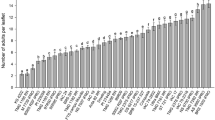Abstract
Bagrada hilaris (Burmeister) (Hemiptera: Pentatomidae) is a serious pest that attacks both germinating and seedling stages of a variety of cruciferous crops grown in the Central Coast of California. B. hilaris feeding on germinating seeds can cause severe stunting and plant mortality, and little is known about the feeding preference of B. hilaris for germinating seeds of major cruciferous hosts and varieties of hosts. No-choice and choice experiments were conducted in which germinating seeds in soilless and soil settings were exposed to B. hilaris adults for 7 days. Susceptibility scores were developed using B. hilaris feeding injury sites, distorted leaves, and deformed and dead plants to determine the overall B. hilaris preference for germinating host seeds. Based on the scores, the order of preference was arugula (Eruca sativa L.) > turnip (B. rapa L. var. rapa) > mizuna (B. rapa L. nipposinica) > kale (B. oleracea L. acephala) > choi (Brassica rapa L. var. chinensis) > broccoli (B. oleracea var. italica Plenck) > cauliflower (B. oleracea L. var. botrytis) > lettuce (Lactuca sativa L.) > sweet alyssum (Lobularia maritima [L.] Desv.). The lowest feeding injury was recorded on germinating lettuce and sweet alyssum seeds. Furthermore, no-choice and choice experiments were conducted with four varieties each of arugula and mizuna, twelve varieties each of kale and choi, and nine varieties/types of leafy Asian greens. The arugula varieties ‘Wild Rocket’ and ‘Spirit’ were more damaged by B. hilaris than other varieties tested. Among mizuna varieties, ‘Beira F1’ was more attractive to B. hilaris than ‘Scarlet’ or ‘Starbor F1.’ The choi varieties ‘Tokyo Bekana,’ ‘Feng Qing Choi F1,’ ‘Joi Choi F1,’ and ‘Win-Win Choi F1’ were more attractive than ‘Rosie F1.’ The leafy Asian greens variety ‘Carlton F1’ was more attractive to B. hilaris than ‘Yukina Savon,’ ‘Tatsoi OG,’ ‘Komatsuna Summerfest F1,’ ‘Red Rain F1,’ and ‘Shungiku.’ Therefore, the results suggest that not all varieties were equally susceptible to B. hilaris feeding and possibly be utilized for further field evaluation as a trap crop or developing more resistant varieties to B. hilaris.



Similar content being viewed by others
References
Bugg, RL, Colfer RG, Chaney WE, Smith HA, Cannon J (2008) Flower flies (Syrphidae) and other biological control agents for aphids in vegetable crops. University of California Division of Agriculture and Natural Resources ANR Public: 1–25
Bundy CS, Grasswitz TR, Sutherland C (2012) First report of the invasive stink bug Bagrada hilaris (Burmeister) (Heteroptera: Pentatomidae) from New Mexico, with notes on its biology. Southwest Entomol 37: 411–414
Chocorosqui VR, Panizzi AR (2004) Impact of cultivation systems on Dichelops melacanthus (Dallas) (Heteroptera: Pentatomidae) population and damage and its chemical control on wheat. Neotrop Entomol 33:487–492
Cook SM, Smart LE, Martin JL, Murray DA, Watts NP, Williams IH (2006) Exploitation of host plant preferences in pest management strategies for oilseed rape (Brassica napus). Entomol Exp Appl 119: 221–229
Hokkanen HMT (1991) Trap cropping in pest management. Ann Rev Entomol 36:119–138
Hong E, Kim G-H (2013) GC–MS analysis of the extracts from Korean cabbage (Brassica campestris L. ssp. pekinensis) and its seed. Prev Nutr Food Sci 18: 218–221
Huang T, Reed DA, Perring TM, Palumbo JC (2014a) Host selection behavior of Bagrada hilaris (Hemiptera: Pentatomidae) on commercial cruciferous host plants. Crop Prot 59:7–13
Huang T, Reed DA, Perring TM, Palumbo JC (2014b) Feeding damage by Bagrada hilaris (Hemiptera: Pentatomidae) and impact on growth and chlorophyll content of Brassicaceous plant species. Arthropod Plant Interact 8:89–100
Hudaib T, Hayes W, Brown S, Eady PE (2010) Effect of seed moisture content and D-limonene on oviposition decisions of the seed beetle Callosobruchus maculatus. Entomol Exp Appl 137:120–125
Jorgensen EE (2001) Emission of volatile compounds by seeds under different environmental conditions. Am Midl Nat 145:419–422
Joseph SV (2014) Effect of trap color on captures of Bagrada bug, Bagrada hilaris (Hemiptera: Pentatomidae). J Entomol Sci 49:318–321
Makwali JA, Wanjala FME, Khaemba BM (2002) Raphanus raphanistrum L as a diversionary host of Brevicoryne brassicae L and Bagrada cruciferarum Kirk. In: Proceedings of the Horticulture Seminar on Sustainable Horticultural Production in the Tropics October 3rd to 6th 2001. Jomo Kenyatta University of Agriculture and Technology, JKUAT, Juja, Kenya
Matsunaga JN (2014) Bagrada bug, Bagrada hilaris (Burmeister) (Hemiptera: Pentatomidae). state of Hawaii department of agriculture, new pest advisory. 14–02, December 2014
McPherson JE, McPherson R (2000) Stink bugs of economic importance in America north of Mexico. CRC Press, Boca Raton
Monterey County Crop Report 2014. Office of Agricultural commissioner- Monterey County, California. http://www.co.monterey.ca.us/Home/ShowDocument?id=1581
Palumbo JC (2011a) Control of Bagrada hilaris with foliar insecticides on broccoli, 2010. Arthropod Manag Tests 36:E8. doi:10.4182/amt.2011.E8
Palumbo JC (2011b) Evaluation of soil systemic insecticides for control of Bagrada hilaris on broccoli, 2010. Arthropod Manage Tests 36: E10. doi:10.4182/amt.2011.E10
Palumbo JC (2011c) Evaluation of experimental insecticides against Bagrada hilaris on broccoli, 2010. Arthropod Manag Tests 36:E9. doi:10.4182/amt.2011.E9
Palumbo JC, Natwick ET (2010) The Bagrada bug (Hemiptera: Pentatomidae): a new invasive pest of cole crops in Arizona and California. Online. Plant Heal Prog http://www.plantmanagementnetwork.org/pub/php/brief/2010/ Bagrada /doi:10.1094/PHP-2010-0621-01-BR
Palumbo JC, Prabhaker N, Reed DA, Perring TM, Castle SJ, Huang T (2015) Susceptibility of Bagrada hilaris (Hemiptera: Pentatomidae) to insecticides in laboratory and greenhouse bioassays. J Econ Entomol 108:672–682
Reed DA, Palumbo JC, Perring TM, May C (2013) Bagrada hilaris (Hemiptera: Pentatomidae), an invasive stink bug attacking cole crops in the southwestern United States. J Integ Pest Mngmt 4(3). doi:10.1603/IPM13007
Sanchez-Pena SR (2014) First record in Mexico of the invasive stink bug Bagrada hilaris on cultivated crucifers in Saltillo. Southwest Entomol 39: 375–377
SAS Institute (2012) SAS Version 9.4. SAS Institute Inc., Cary, NC
Shelton AM, Badenes-Perez FR (2006) Concepts and applications of trap cropping in pest management. Annu Rev Entomol 51:285–308
Shelton AM, Nault BA (2004) Dead-end trap cropping: a technique to improve management of the diamondback moth, Plutella xylostella (Lepidoptera: Plutellidae). Crop Prot 23:497–503
Shelton AM, Cooley RJ, Kroening MK, Wilsey WT, Eigenbrode SD (1991) Comparative analysis of two rearing procedures for diamondback moth, Plutella xylostella (Lepidoptera: Plutellidae). J Entomol Sci 26:17–26
Siemens DH, Mitchell-olds T (1996) Glucosinolates and herbivory by specialists (Coleoptera: Chrysomelidae, Lepidoptera: Plutellidae): consequences of concentration and induced resistance. Environ Entomol 25: 1344–1353
USDA–NASS (2014) California Agricultural Statistics Vegetables summary. United States Department of Agriculture, National Agricultural Statistics Service, Beltsville
Valette L, Fernandez X, Poulain S, Lizzani-Cuvelier L, Loiseau A-M (2006) Chemical composition of the volatile extracts from Brassica oleracea L. var. botrytis ‘Romanesco’ cauliflower seeds. Flavour Fragr J 21:107–110
Vitanza S (2012) Texas Agrilife Extension El Paso County, IPM Program Newsletter 37(6). (http://www.tpma.org/_newsletters/_el_paso/_2012/08312012%20_6.pdf).
Wallingford AK, Kuhar TP, Pfeiffer DG, Tholl DB, Freeman JH, Doughty HB, Schultz PB (2013) Host plant preference of harlequin bug (Hemiptera: Pentatomidae), and evaluation of a trap cropping strategy for its control in collard. J Econ Entomol 106:283–288
White WH, Brannon LW (1933) The harlequin bug and its control. U.S. Dep. Agric. Farmers Bull. 1712:1–10
Acknowledgements
The authors appreciate the technical assistance provided by C. Ramirez and J. Martinez with experiments, and agro-chemical companies, California Department of Food and Agriculture (CDFA) Specialty Crop Block Grant (agreement#SCB14059) and University of California Integrated Pest Management (UC IPM) statewide program for providing funding for this project.
Author information
Authors and Affiliations
Corresponding author
Additional information
Handling Editor: Heikki Hokkanen.
Rights and permissions
About this article
Cite this article
Joseph, S.V., Grettenberger, I.M., Godfrey, L.D. et al. Susceptibility of germinating cruciferous seeds to Bagrada hilaris (Hemiptera: Pentatomidae) feeding injury. Arthropod-Plant Interactions 11, 577–590 (2017). https://doi.org/10.1007/s11829-017-9501-0
Received:
Accepted:
Published:
Issue Date:
DOI: https://doi.org/10.1007/s11829-017-9501-0




